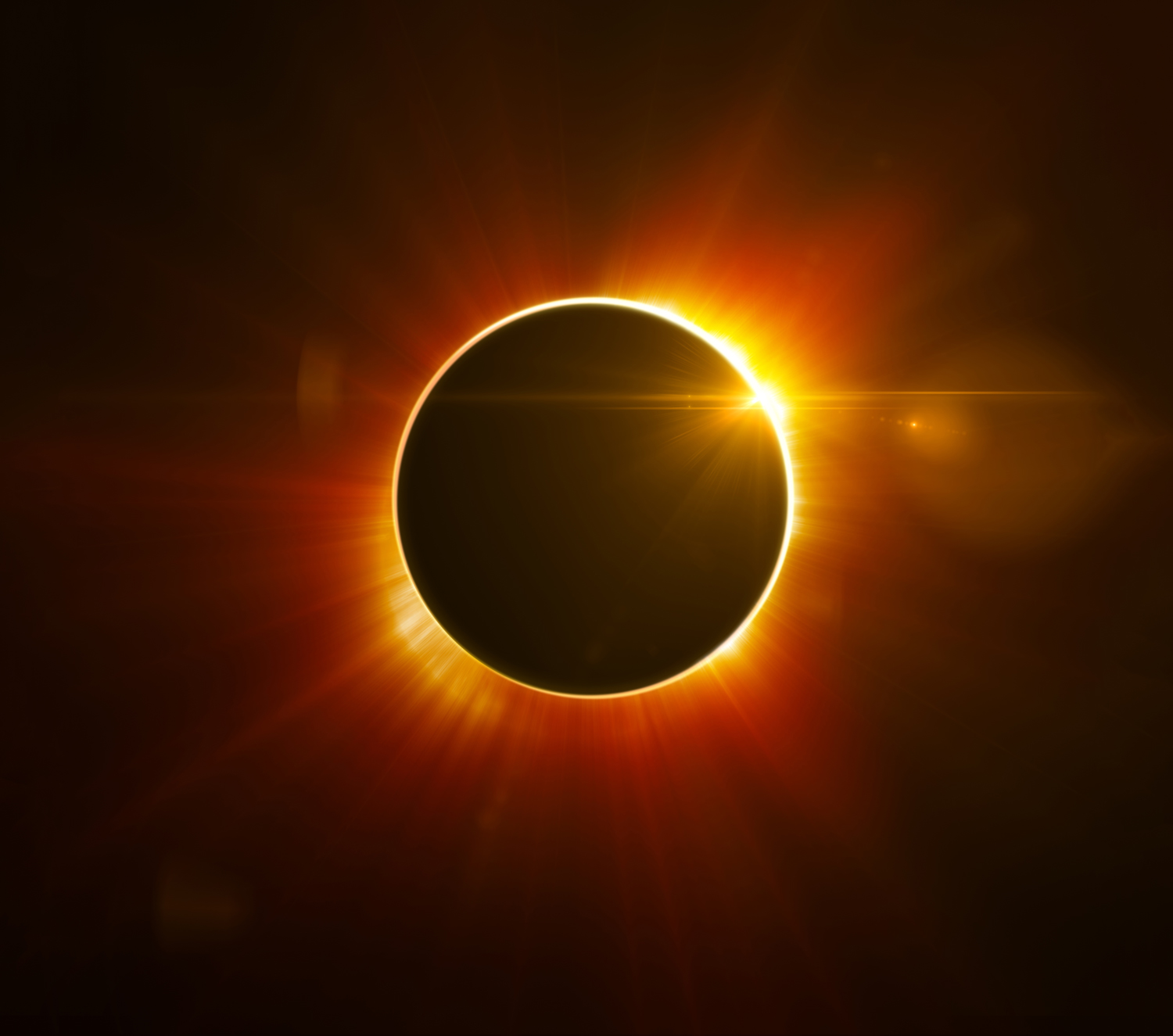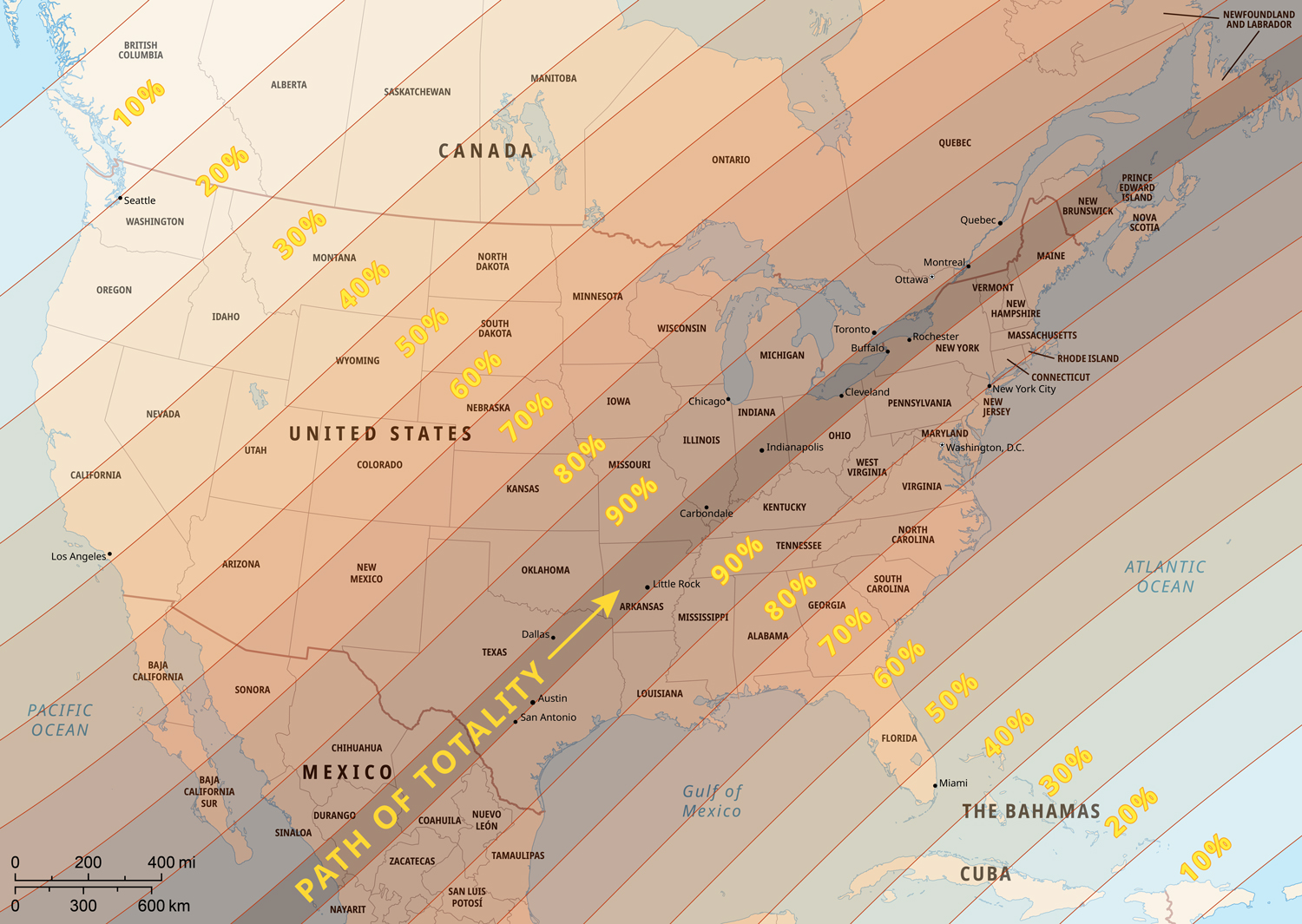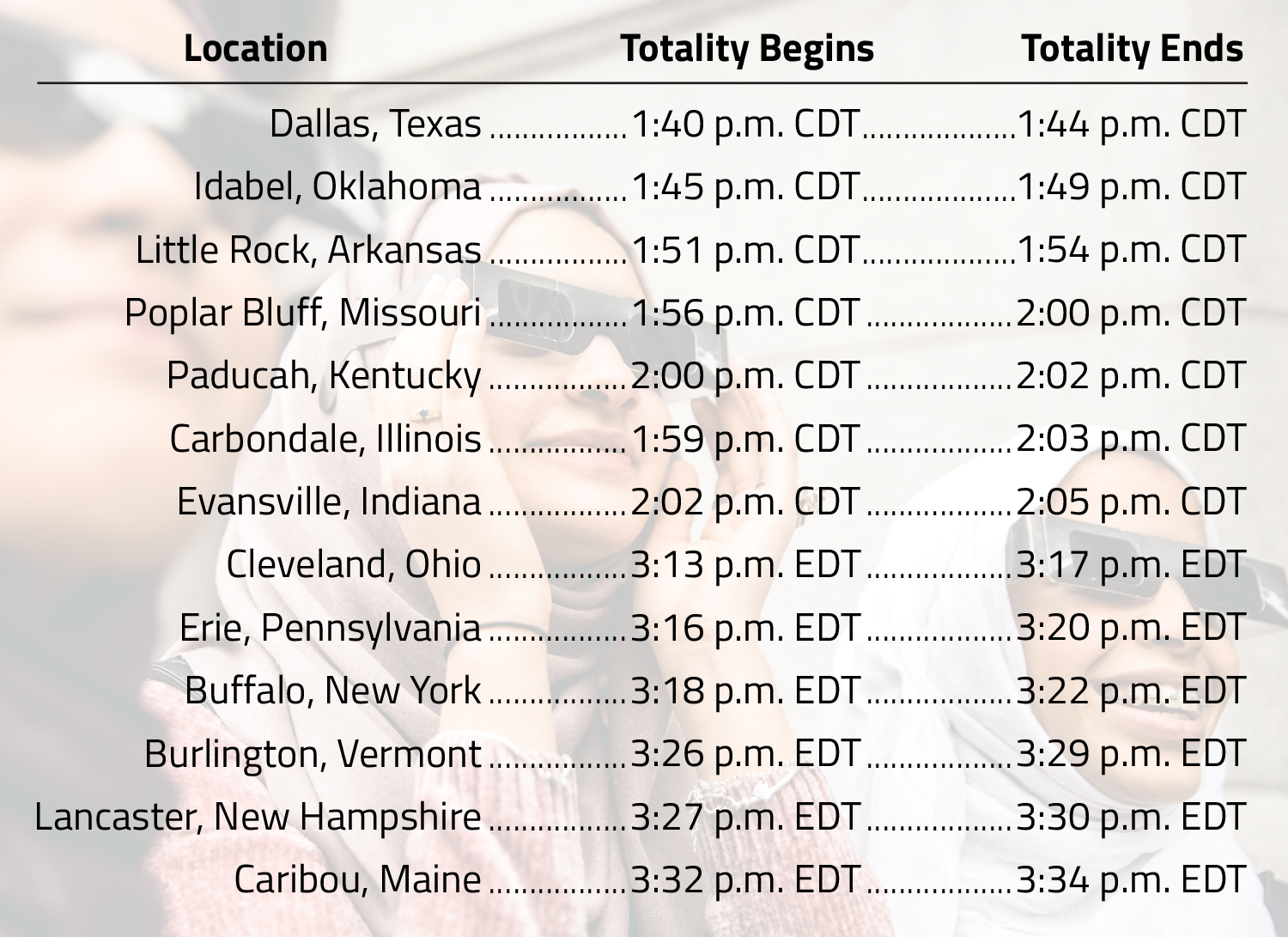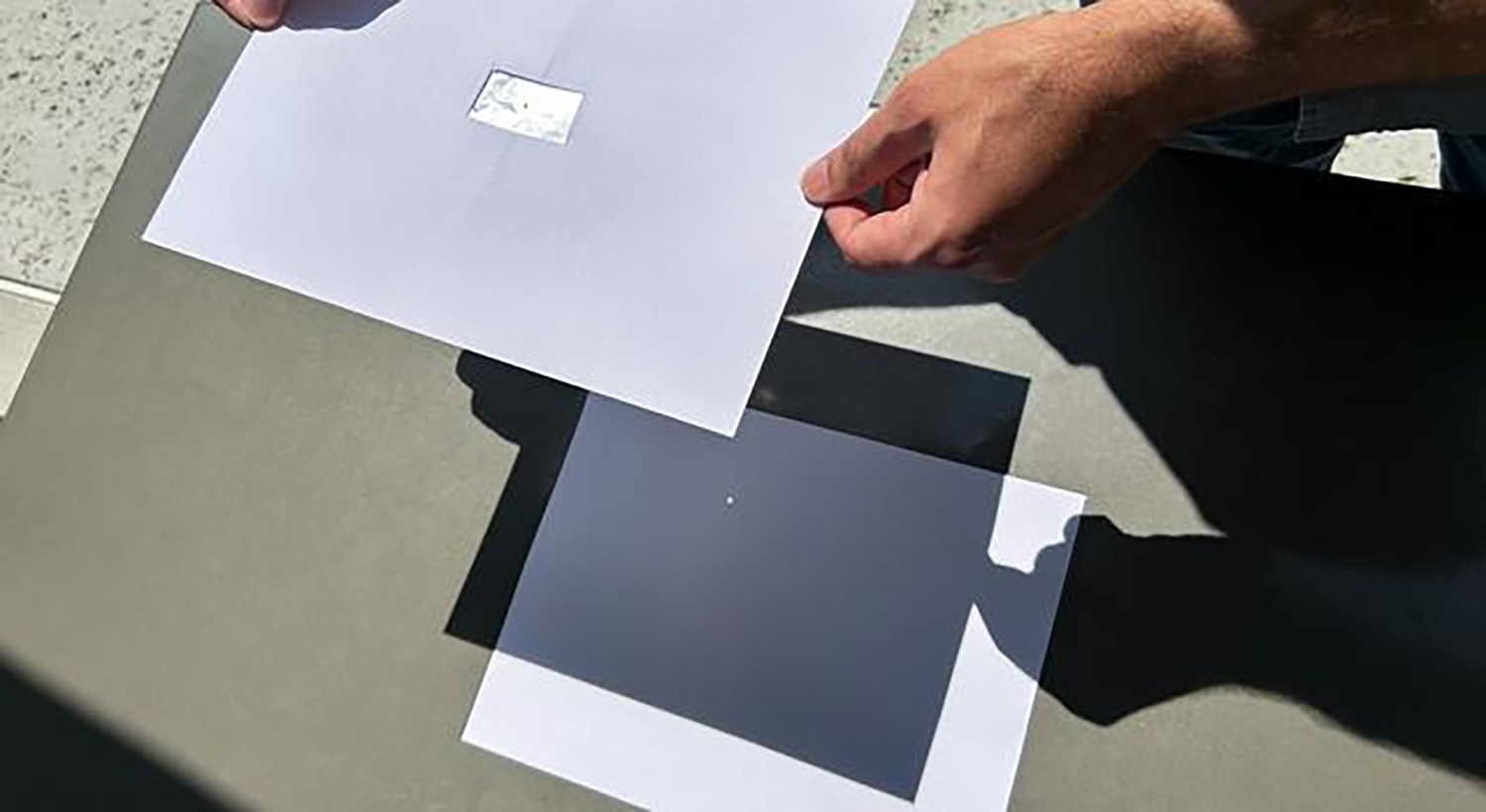A Rare Solar Eclipse
On April 8, the United States will experience a total solar eclipse. How should you prepare?

On April 8, North America will experience a rare event: a total solar eclipse. In some parts of Mexico, the United States, and Canada, the daytime sky will briefly go completely dark.
During a total solar eclipse, the Moon passes between Earth and the Sun, blocking sunlight from reaching some areas of Earth. Along a narrow band on the surface of our planet, called the path of totality, the sky goes completely dark for a short time and only the outer edge of the Sun (called the corona) can be seen.
On April 8, totality, or complete darkness, will begin over the Pacific Ocean and pass over Mazatlán, a city on the west coast of Mexico at about 2:07 p.m. Eastern time. From there, the Moon’s shadow will move over Mexico and into the U.S. and then Canada. Totality in the United States begins in Texas just before 2:30 p.m. Eastern time and ends in Maine at just after 3:30 p.m. Eastern time. Each location in the path of totality will be completely dark for only a few minutes or even seconds. But things won’t go back to normal right away. Before and after totality, each location will experience a partial solar eclipse—a period when the Moon is partially blocking the Sun.

North Americans who live outside the path of totality will experience a partial eclipse. Depending on their location, the Moon’s shadow might still cover quite a bit of sunlight, making the experience worth watching. The rarity of the event also makes it worth paying attention to. Most of the United States won’t experience another total solar eclipse until 2044. (Part of Alaska will experience a total eclipse in 2033.)
Experts say it’s important to experience the eclipse safely. Looking directly at the Sun is dangerous, even during an eclipse. If you’re planning to gaze up at the sky on April 8, do so only through a device that’s designed to protect your eyes, such as paper eclipse glasses or a handheld solar viewer.



